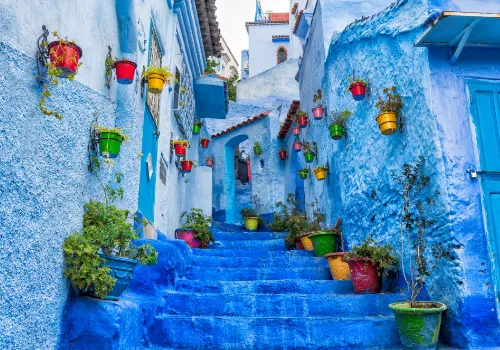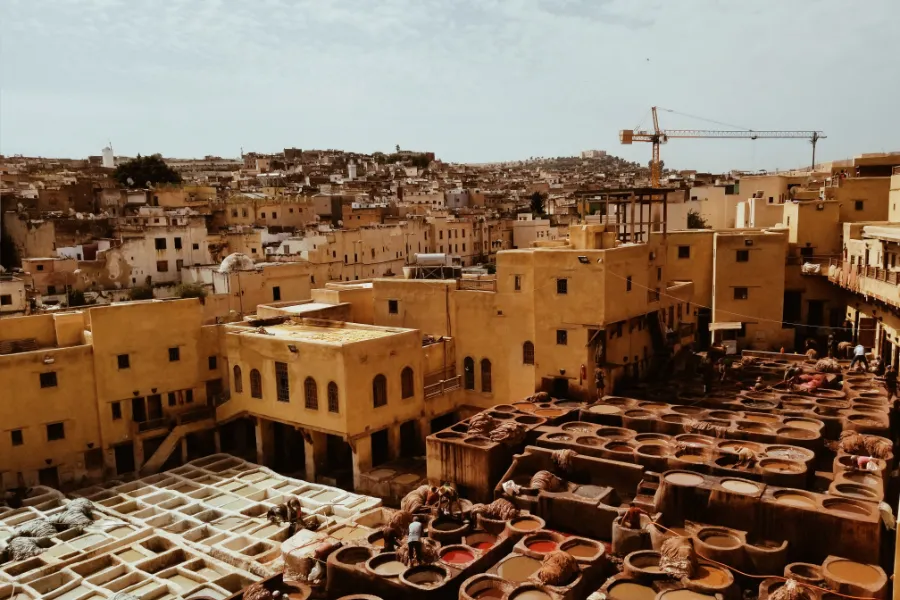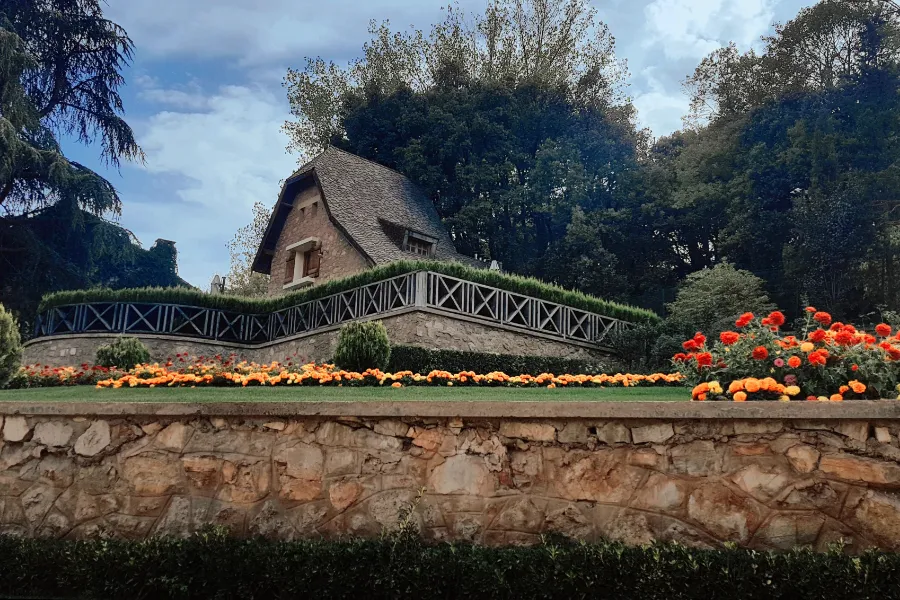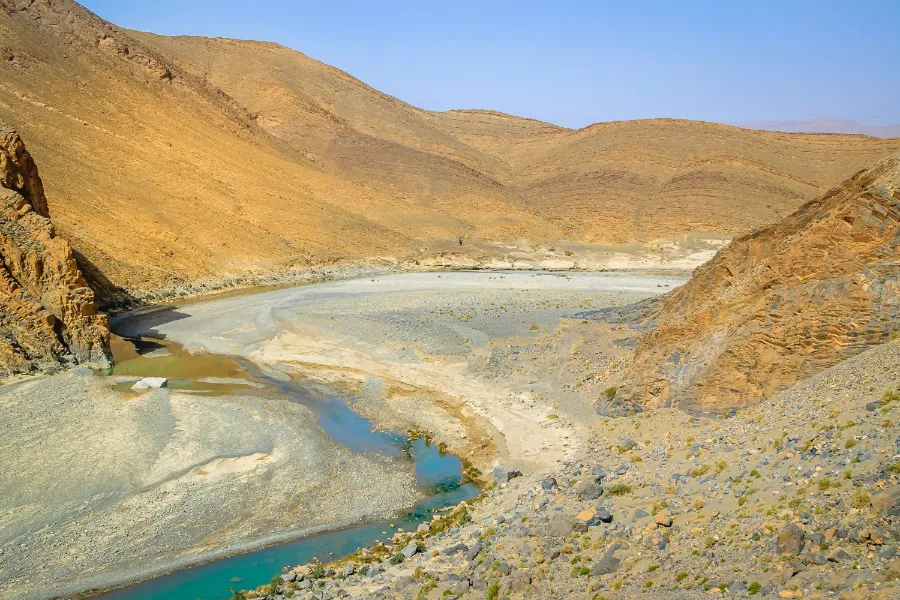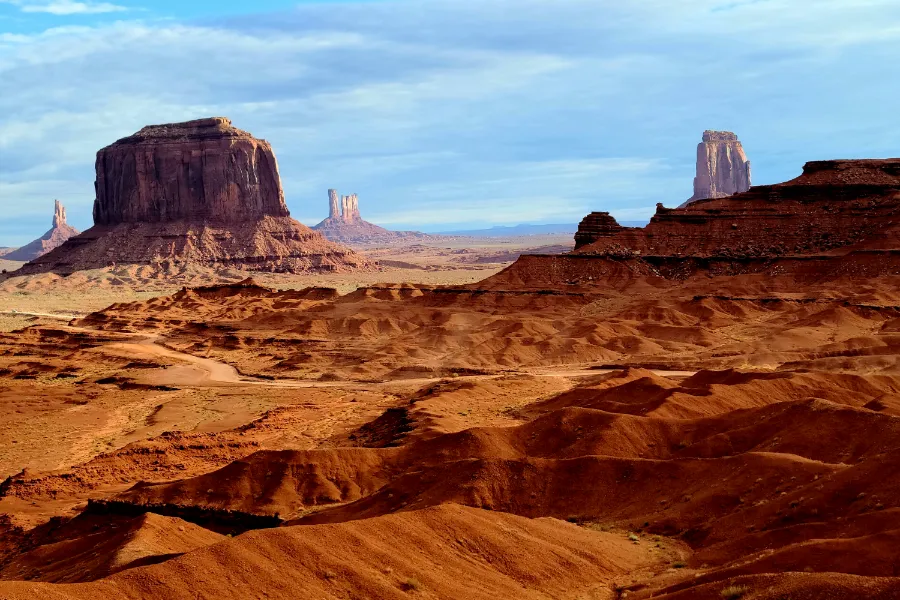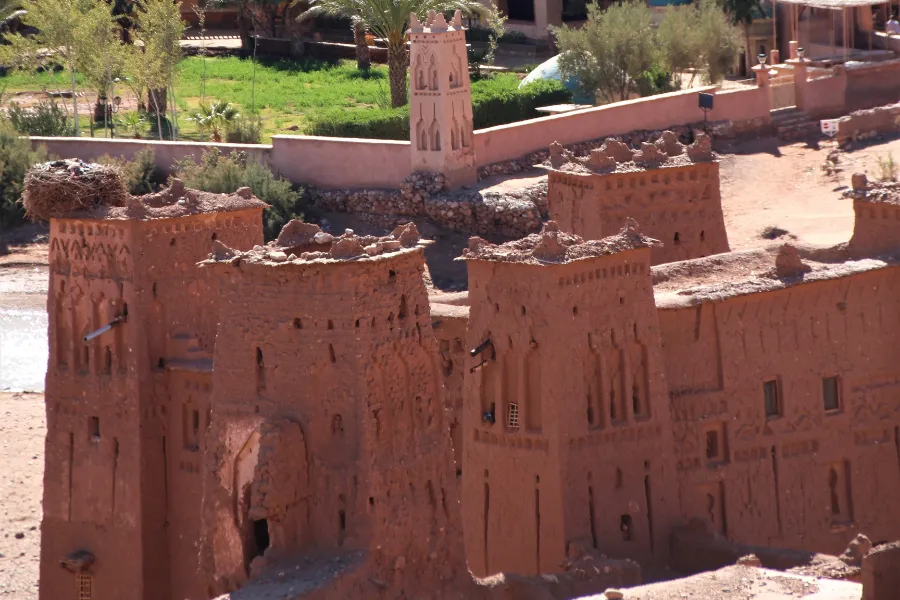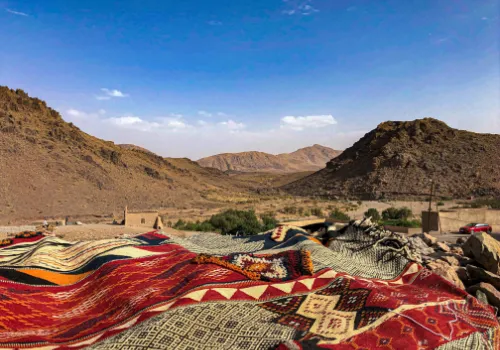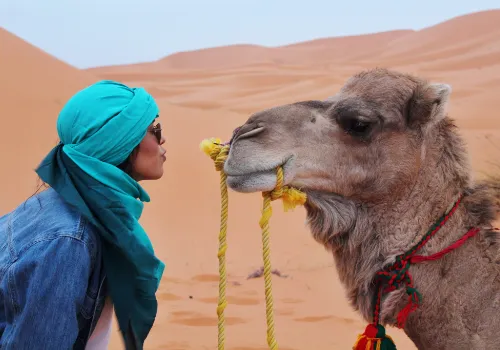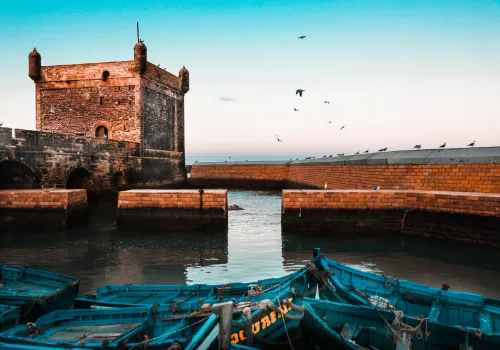Morocco Imperial Cities Highlights And Sahara Tour
Our most thorough tours of Morocco, with free days built in to relax or experience even more. Main sights include the best of the North: the pearl of Morocco Chefchaouen, to Fes and the high Atlas, then journeying to the South to experience the Sahara Desert, Boumalne Dades, Ouarzazate , Kasbahs , and ochre city of Marrakech.
Itinerary
Day 1
Casablanca Airport pickup drop off at your Hotel in Chefchaouen
Upon arrival to Casablanca; the biggest city of the country; you will be met and transferred to your hotel. (It depends on your arrival time,) you would be able to go for a visit to the Great Mosque Hassan II where you will meet a fascinating example of the Moroccan architecture. It is the largest mosque in the kingdom and the fifth largest mosque in the world. It stands on a promontory looking out on the Atlantic, and has space for 25,000 worshippers. A further 80,000 can be accommodated in the mosque’s adjoining grounds for a total of 105,000 worshippers present at any given time at the Hassan II mosque. Its minaret is the tallest one in the world at 210 m.Day 2
free day to explore Chefchaouen by your own pace
Chefchaouen is famous for its vivid blue rinsed houses and is very popular for both tourists and Moroccans, particularly in the hot summer months. Explore Chefchaouen, with its winding lanes and narrow alleys which are home to numerous souks offering cuisine and artisan works, such as woollen items, intricate embroidery, and goats cheese; all native to the North and not found anywhere else in Morocco. Relax in the square, visit a local farm or hike in nearby parks.Day 3
Chefchaouen – Fes – (half Day guided Tour, Fez Medina)
After visiting the pearl of Morocco, here we go for another adventure through the intellectual capital of Fez which was considered Mecca of the west and Athena of Africa.It is the biggest city of the country after Casablanca with a population of approximately 1 million.This city is a the former capital and one of the country’s four imperial cities. Fez comprises three distinct parts, Fez el Bali which is the oldest part surrounded by a big wall, where are more than 9000 narrow streets and allies. Fez-Jdid or the new Fes, home of the Mellah the Jewish quarter and the Ville Nouvelle the newest section of Fez created during the French occupation.Fez el Bali is a UNESCO World Heritage Site. Its medina is the largest in the world. Among its narrow streets and allies, the oldest university in the world is located; The University of Al-Karaouine, founded in AD 859. This University is still operating nowadays.Day 4
Fes – Ifrane – Ziz valley – Erfoud – Merzouga
This is a long driving day, where we will meet different colors of the kingdom by leaving the old Moroccan city of Fes. In the way we will pass through the most modern and clean city in the country Ifran. This Berber name of Ifran means caves and it is nicknamed in Morocco as a little Switzerland since it is a very green town and is a ski resort in the Middle Atlas region of Morocco because of its high altitude at 1665 meters. Ifran is very known as well by The Brotherhood private university, established in 1997 by The king of Morocco Hassan II and the king of Saudi Arabia Fahd. Where all classes are taught in English, it is an international university. Lunch will be scheduled in a Berber village called Midelt which is situated on the foothills of the eastern part of the High Atlas Mountains. From vast plateau we start crossing up those tough mountains which are still settled by a big Berber community. The landscapes here includes palm tree oases at Jbel Ayachi (at 3747 m) before driving down the curves and join the pre-Saharan zone passing first by Errachidia and Erfoud, which is famous for its pottery and the interesting fossil quarries. Fossils are a major industry in Erfoud, some 350 million years ago the region around Erfoud was a part of the huge ocean. Heading up to the red colored sand sea dunes of Erg Chebbi at Merzouga via Rissani, the hometown of the Alaouist dynasty, where Moulay Ali sheriff started to unify Morocco under his red flag in the beginning of the 17th century. From a vast plateau you will get impressed by the huge sand dune of Merzouga appearing from the horizon.in the evening we go on a camel ride about one hour and half to meet one of the most fascinating sight we will ever seen, the superb sunset in the middle of the high sand dunes of Merzouga. Overnight in Berber tented desert camp and enjoy a wonderful stars view.Day 5
Merzouga – Rissani – Todgha Gorges – Dades Gorges
If you wake up early enough, you can see the spectacular of the sunrise, when the color of the dunes and the play of shadow are awesome.then taking camel again for going back to the hostel shower then departing to see plenty of nomadic black people .We shall stop by a nomadic family to have tea and see what a nomadic life looks like . let’s discover the nomadic life of Touareg people by visiting Alkhamliya, a village where nothing has been changed through centuries. Visiting Errisani and the Mausoleum of the founder of the Alaouite Dynasty of Morocco, Moulay Ali Chrif in the 17th century. This silent town was the ancient capital of Tafilalet and its location as a crossroads between north and south brought the city to an important status of a former major caravan center. Up to now Rissani remains a major commercial center in the region, with a large souk, particularly lively today on Tuesdays, Thursdays and Sunday. It was noted for its leather and goat skin trading in ancient ages.127 km from Errisani the great canyons of Morocco Todgha Gorges are situated beyond the central high Atlas Mountains. Here, the contrasting landscapes remind visitors of the Colorado, with its high plateau, its gorges and great canyons, and its peaks sometimes splintered by erosion. Several peaks in this area exceed 4000 m, with Jbel Saghro 2500 m and Jbel Mgoun at 4068 m being the highest peak in this part of the High Atlas. The area is populated by Berbers.Here you can enjoy a hike among those fabulous canyons. From the great canyons of Todgha we go along the road of 1000 kasbahs, since there are enormous Kasbahs on both sides of the road. Some of those old fortified houses are restored but unfortunately a lot of them are ruins. A visit to one of those kasbahs is scheduled by seeing Amridil Kasbah. We pass a town called Boumalen situated on the edge of Dades valley which rises in the High Atlas Mountains, giving life to a huge Berber community by its rich agriculture. Along this valley, then visit Todra Gorges and check at the hotel there.Day 6
Dades Gorges – Valley of Roses – Skoura – Ouarzazate – Ait Ben Haddou – Marrakech.
another valley called valley of roses appearing with the green colors of its Alfalfa plants, olive trees, fig trees and grapes. This valley gives birth to a rose from which locals produces different cosmetic products like soap, perfumes and skin creams. Locals here celebrate this rose by organizing a national festival each end of April. Getting to Ouarzazate (Hollywood of Africa, Noiselessly town, The door of the desert), is a city situated in the middle of a bare plateau, south of the High Atlas Mountains. It is mainly inhabited by Berbers, who constructed many of the prominent kasbahs and building for which the area is known. One of those building is Taourirt Kasbah diverted in 17th century.Why this town is nicknamed as Hollywood of Africa? Simply because it has been noted as a film-making location, with Morocco’s biggest studios inviting many international film companies to shoot their movies like: Lawrence of Arabia (1962), The Living Daylights (1987), The Last Temptation of Christ (1988), The Mummy (1999), Gladiator (2000), Kingdom of Heaven (2005), Martin Scorsese’s Kundun (1997) and Babel (2005) 30 km from Ouarzazate there is the fortified city of Aït Ben Haddou, built in the 11th century. Once up on a time this Kasbah was the former caravan route between the Sahara and Marrakesh. It is situated on a hill along the Ounila River and has some beautiful examples of kasbahs, which unfortunately sustain damage during each rainstorm and windstorms. Most of the town’s inhabitants now live in a more modern village at the other side of the river; however, around five families are still living within this Kasbah.Aït Benhaddou Kasbah has been a UNESCO World Heritage Site since 1987 and several films have been shot there, including Lawrence of Arabia (1962), Time Bandits (1981), The Jewel of the Nile (1985), Kundun (1997), Gladiator (2000) and Alexander (2004).From this beautiful fortified Kasbah. we head to Marrakech via high atlas mountains Tizn Tichka Pass (2200 meter of altitude) During the journey we will enjoy many beautiful scenes of the Berber villages, elevated views of the mountains. finally We get to the magical city of Marrakech where your trip is up to end. • Departure Point : Casablanca • End Point : Marrakech • Departure Time : 09:00 • Return Time : 19:00Photo Gallery
Other Information
Price Includes
- Pick-up from the airport Casablanca Med V or from your accommodation in Casablanca.
- Transport by Air Conditioned Minibus/4WD.
- Fuel.
- Two nights in Chefchaouen at the Hotel/Riad+ breakfast.
- One night in Fes at the hotel/Riad+breakfast.
- Guided half day city tour of Fes with official guide.
- Camel ride/4×4 in Sahara Merzouga.
- Private Luxury sleeping camp in Sahara Merzouga.
- Dinner & Breakfast in Sahara Merzouga.
- Private room with shower and toilet, AC/Heater.
- Dinner & Breakfast at the hotel in Dades Gorges.
- One Hour guided in Ait Ben Haddou Castle.
- Drop-off at your accommodation in Marrakech.
Price Excludes
- Lunch
- Drinks
- Gratuities (Optional)

